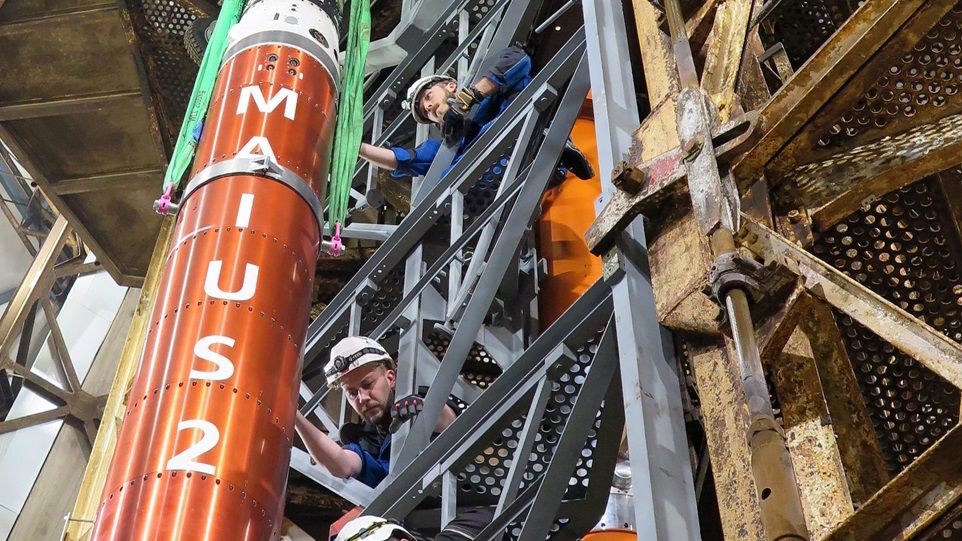
Hightech at high altitude

High-flying with Leibniz technology: Laser modules play an important role in the MAIUS-2 mission launched into space in December.
12/11/2023 · News · Ferdinand-Braun-Institut, Leibniz-Institut für Höchstfrequenztechnik · Mathematik, Natur- und Ingenieurwissenschaften · Forschungsergebnis
The MAIUS-2 mission rocket was launched into space on December 2, 2023 from Kiruna, Sweden. On board the sounding rocket 75 experiments were scheduled in which compounds of so-called Bose-Einstein condensates, based on rubidium and potassium atoms, are investigated. The findings will be evaluated over the next few months. Laser modules developed and manufactured by the Ferdinand-Braun-Institut play an important role in controlling and manipulating the atoms under extreme conditions.
A Bose-Einstein condensate is an extreme state of matter in which the atoms of an ultra-cold gas cloud are in a common quantum mechanical state. This ensemble of ultra-cold atoms is described by a spatially extended matter wave, which is used to perform interference experiments that bear a certain resemblance to optical interference experiments. During the five-and-a-half-minute flight in zero gravity, the Bose-Einstein condensates are used to measure accelerations and forces as well as the interaction between the ultra-cold atoms of the condensates with high precision. Zero gravity makes it possible to achieve particularly low temperatures that are unattainable on Earth. Among other things, the researchers expect that this will lead to a deeper understanding of the fundamental forces of nature. Space-based atom interferometers also offer promising approaches for the navigation of future space probes.
Manipulating and detecting atoms with FBH laser modules
In order to create such Bose-Einstein condensates, the atoms are initially cooled and trapped using lasers and magnetic fields. The most energetic atoms are then removed from a so-called magnetic trap by exposing them to microwaves. This cools them below the critical temperature of a few hundred nanokelvins and a Bose-Einstein condensate is formed.
The Ferdinand-Braun-Institut (FBH) has developed and realized the laser sources required for the experiments in the joint Quantus IV - MAIUS (Maius-II) project. Their laser light can be used to coherently manipulate and detect the atomic species rubidium and potassium. FBH supplied a total of ten ECDL-MOPA laser modules from the MiLas® series with emission wavelengths of 767 nm, 780 nm, and 1064 nm for the mission. ECDL-MOPAs– Extended Cavity Diode Laser - Master Oscillator Power Amplifiers – are diode laser modules that allow the characteristics of the laser pulses to be optimally controlled by the master oscillator combined with a power amplifier. These modules are based on FBH's comprehensive expertise in semiconductor technology, its unique microintegration technology, and the institute's know-how in manufacturing for the space industry. Thanks to their high optical power, excellent spectral stability and extremely low ‘SWaP budget’ – short for size, weight, and power – these laser modules enable highly complex quantum physics experiments in very confined spaces. In addition, FBH has manufactured two further Distributed Feedback (DFB) laser modules for the mission. They serve as a frequency reference, with one of the modules being frequency locked to the rubidium transition and the other to the potassium transition. These modules are based on the technology platform already used for the previous MAIUS-I mission, which successfully generated a Bose-Einstein condensate in space for the first time.
Further information and contact
Press release - Ferdinand-Braun-Institut, Leibniz-Institut für Höchstfrequenztechnik (FBH)